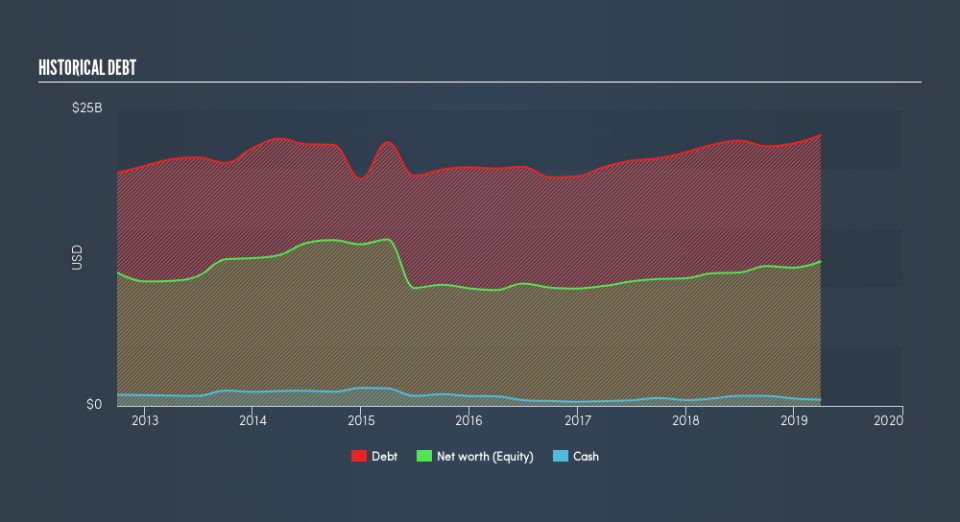Is PPL (NYSE:PPL) A Risky Investment?

The external fund manager backed by Berkshire Hathaway's Charlie Munger, Li Lu, makes no bones about it when he says 'The biggest investment risk is not the volatility of prices, but whether you will suffer a permanent loss of capital.' So it seems the smart money knows that debt - which is usually involved in bankruptcies - is a very important factor, when you assess how risky a company is. Importantly, PPL Corporation (NYSE:PPL) does carry debt. But the real question is whether this debt is making the company risky.
Why Does Debt Bring Risk?
Debt is a tool to help businesses grow, but if a business is incapable of paying off its lenders, then it exists at their mercy. Ultimately, if the company can't fulfill its legal obligations to repay debt, shareholders could walk away with nothing. However, a more frequent (but still costly) occurrence is where a company must issue shares at bargain-basement prices, permanently diluting shareholders, just to shore up its balance sheet. By replacing dilution, though, debt can be an extremely good tool for businesses that need capital to invest in growth at high rates of return. The first step when considering a company's debt levels is to consider its cash and debt together.
Check out our latest analysis for PPL
What Is PPL's Net Debt?
The chart below, which you can click on for greater detail, shows that PPL had US$22.8b in debt in March 2019; about the same as the year before. However, because it has a cash reserve of US$518.0m, its net debt is less, at about US$22.3b.
How Healthy Is PPL's Balance Sheet?
The latest balance sheet data shows that PPL had liabilities of US$4.06b due within a year, and liabilities of US$28.3b falling due after that. On the other hand, it had cash of US$518.0m and US$1.31b worth of receivables due within a year. So its liabilities total US$30.6b more than the combination of its cash and short-term receivables.
Given this deficit is actually higher than the company's massive market capitalization of US$21.9b, we think shareholders really should watch PPL's debt levels, like a parent watching their child ride a bike for the first time. Hypothetically, extremely heavy dilution would be required if the company were forced to pay down its liabilities by raising capital at the current share price.
We use two main ratios to inform us about debt levels relative to earnings. The first is net debt divided by earnings before interest, tax, depreciation, and amortization (EBITDA), while the second is how many times its earnings before interest and tax (EBIT) covers its interest expense (or its interest cover, for short). This way, we consider both the absolute quantum of the debt, as well as the interest rates paid on it.
With a net debt to EBITDA ratio of 5.2, it's fair to say PPL does have a significant amount of debt. However, its interest coverage of 3.2 is reasonably strong, which is a good sign. Even more troubling is the fact that PPL actually let its EBIT decrease by 4.0% over the last year. If it keeps going like that paying off its debt will be like running on a treadmill -- a lot of effort for not much advancement. There's no doubt that we learn most about debt from the balance sheet. But ultimately the future profitability of the business will decide if PPL can strengthen its balance sheet over time. So if you want to see what the professionals think, you might find this free report on analyst profit forecasts to be interesting.
Finally, a company can only pay off debt with cold hard cash, not accounting profits. So we clearly need to look at whether that EBIT is leading to corresponding free cash flow. Over the last three years, PPL recorded negative free cash flow, in total. Debt is far more risky for companies with unreliable free cash flow, so shareholders should be hoping that the past expenditure will produce free cash flow in the future.
Our View
On the face of it, PPL's level of total liabilities left us tentative about the stock, and its conversion of EBIT to free cash flow was no more enticing than the one empty restaurant on the busiest night of the year. Having said that, its ability to grow its EBIT isn't such a worry. It's also worth noting that PPL is in the Electric Utilities industry, which is often considered to be quite defensive. After considering the datapoints discussed, we think PPL has too much debt. That sort of riskiness is ok for some, but it certainly doesn't float our boat. Given our concerns about PPL's debt levels, it seems only prudent to check if insiders have been ditching the stock.
Of course, if you're the type of investor who prefers buying stocks without the burden of debt, then don't hesitate to discover our exclusive list of net cash growth stocks, today.
We aim to bring you long-term focused research analysis driven by fundamental data. Note that our analysis may not factor in the latest price-sensitive company announcements or qualitative material.
If you spot an error that warrants correction, please contact the editor at editorial-team@simplywallst.com. This article by Simply Wall St is general in nature. It does not constitute a recommendation to buy or sell any stock, and does not take account of your objectives, or your financial situation. Simply Wall St has no position in the stocks mentioned. Thank you for reading.

